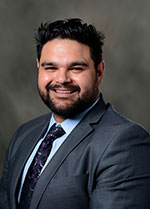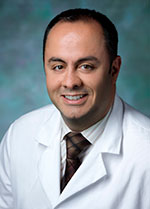Article:
Shaker M. Eid, Lucia Ponor, Darcy A. Reed, May A. Beydoun, Hind A. Beydoun, and Scott Wright (2019) Associations Between In-Hospital Mortality, Health Care Utilization, and Inpatient Costs With the 2011 Resident Duty Hour Revision. Journal of Graduate Medical Education: April 2019, Vol. 11, No. 2, pp. 146-155.
https://doi.org/10.4300/JGME-D-18-00415.1
Summary:
This retrospective study sought to evaluate the impact of the 2011 ACGME duty hour revisions on various clinical outcomes. The mortality rates and length of stay did not differ between teaching hospitals as compared to non-teaching hospitals, which comprised the control group in this study. For this blog post Viren Kaul interviewed the lead author of the study, Shaker M. Eid.
VK: Your study is different compared to previous studies in the area that assessed the impact of duty hour changes in various domains of residency training. What are the benefits and shortcomings of your approach?
SME: Using a national database of hospitalizations across the United States, our study examined the effects of the ACGME’s 2011 duty hour revision on outcomes (mortality, length of stay, hospitalization costs) at teaching hospitals, taking non-teaching hospitals as a comparison group.
To our knowledge, this is the only study to examine this phenomenon in teaching hospitals at the national level while using non-teaching hospitals as controls. In addition, we used the quasi-experimental design of interrupted time series analysis (ITSA) for our outcomes which controls for the effect of secular trends in a time series of outcome measures, thus significantly reducing bias that might be present in a simple 2-time-period comparison design. Our design thus ensures that any observed "effect" would then be most likely attributable to the "intervention" at teaching hospitals. Many of the other studies in the literature are either small, single center studies or multi-center studies, focused solely on outcomes at teaching hospitals designed as a pre-post study, without accounting for trends or other factors affecting outcomes of interest. Our study is not without shortcomings that we clearly delineated in our manuscript under the limitations section.
VK: Regarding the impact on patient outcomes, how do you explain/hypothesize the divergence of your results compared to previous studies, such as by Denson et. al. in 2016 (https://jamanetwork.com/journals/jama/fullarticle/2589342)?
SME: The Denson et. al. study published in JAMA in 2016 was a well-structured analysis of data from 10 VA hospitals. One major difference is that VA hospitals tend to include a patient population comprised predominantly of older men with multiple comorbidities. Thus, while the results of that paper can be easily generalizable to the VA hospital population, it clearly does not generalize to the overall hospital population in the United States, which is much better represented in our database.
VK: What other outcomes besides those studied by your group (mortality, LOS, cost of hospitalization) may have been better suited to assess the impact on patient care?
SME: Besides the important outcomes addressed in our study, others that we would have wanted to study at the national level, but were not able to due to lack of capture of such information in the database we used, would have been medical errors and preventable adverse events. Further, patient satisfaction with care, and particularly continuity across the hospitalization, would be important to consider. Thirty-day readmission rates is also an outcome that we all value.
VK: Would studying specific patient groups or disease states or different service lines provide more granular and actionable information in your opinion?
SME: We do not believe that would be of much additional benefit as any study evaluating the effect of duty hour changes should include a similar population to the one that residents or learners in general manage in the hospital setting. Because learners manage a wide breadth of admissions in the hospital, studying one disease state would provide different (and not necessarily more meaningful) data. For example, "stroke units" that have specific protocols and specialized multidisciplinary care teams probably would have been influenced significantly less by the duty hour changes than care delivered on general medical units.
VK: What guidance would you provide to program directors or regulatory agencies on the risk (no improvement in patient-centered outcomes) vs benefits (potential reduction in educational and wellness metrics of trainees) of the 2011 duty hour changes based on your results?
SME: We would remind all that future changes and studies must consider both clinical (primarily patient-centered outcomes) and also educational outcomes. The value of a control group when considering all observational studies cannot be understated. Finally, to truly assess impact of changes, a large multi-center randomized controlled trial would be needed to identify the optimal work schedule to maximize patient care and professional development of trainees.

Blog post author
Viren Kaul is a pulmonary and critical care physician at Crouse Health and Assistant Professor of Medicine at SUNY Upstate Medical University. His research interests are studying the role of social media/technology in medicine/medical education, pleural disease, and airway management. His other interests in medical education are simulation-based performance improvement and inter-professional education. Viren currently serves as the Web Director for the American Thoracic Society’s Section on Medical Education and is an engaged member of the Members in Transition and Training Committee.

Article author
Shaker M. Eid is Associate Professor of Medicine at the Johns Hopkins University School of Medicine and the Director of Research for the Division of Hospital Medicine at Johns Hopkins Bayview Medical Campus. His interests include quality improvement, patient-centered outcomes research, and application of Lean-Sigma concepts in healthcare. He is the Chair of the Society of Hospital Medicine National Research Committee. He has published more than 100 articles, editorials, expert opinion pieces and abstracts and has successfully mentored many Internal Medicine trainees and faculty to academic success within Johns Hopkins Medicine as well as other major medical institutions across the United States.



